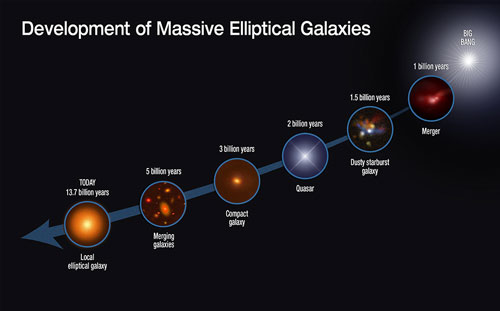 Astronomers using NASA's Hubble Space Telescope and Europe's Herschel Space Observatory have pieced together the evolutionary sequence of compact elliptical galaxies that erupted and burned out early in the history of the universe.
Astronomers using NASA's Hubble Space Telescope and Europe's Herschel Space Observatory have pieced together the evolutionary sequence of compact elliptical galaxies that erupted and burned out early in the history of the universe.
Jan 29th, 2014
Read more
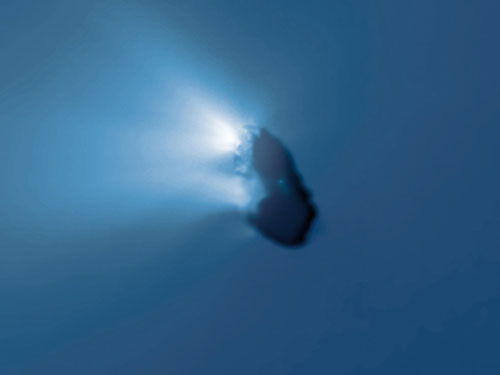 Space probes have studied the nuclei of comets from up close, gathered material, and even fired a projectile.
Space probes have studied the nuclei of comets from up close, gathered material, and even fired a projectile.
Jan 28th, 2014
Read more
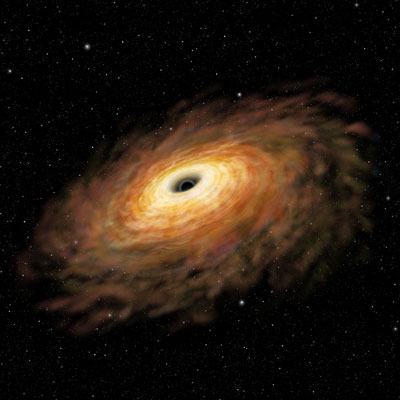 A team of astronomers has conducted infrared observations of luminous, gas-rich, merging galaxies with the Subaru Telescope to study active, mass-accreting supermassive black holes (SMBHs). They found that at least one SMBH almost always becomes active and luminous by accreting a large amount of material.
A team of astronomers has conducted infrared observations of luminous, gas-rich, merging galaxies with the Subaru Telescope to study active, mass-accreting supermassive black holes (SMBHs). They found that at least one SMBH almost always becomes active and luminous by accreting a large amount of material.
Jan 28th, 2014
Read more
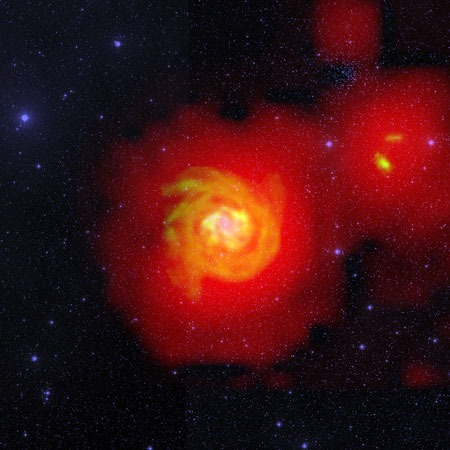 Using the Robert C. Byrd Green Bank Telescope, astronomers have discovered what could be a never-before-seen river of hydrogen flowing through space. This very faint, very tenuous filament of gas is streaming into the nearby galaxy NGC 6946 and may help explain how certain spiral galaxies keep up their steady pace of star formation.
Using the Robert C. Byrd Green Bank Telescope, astronomers have discovered what could be a never-before-seen river of hydrogen flowing through space. This very faint, very tenuous filament of gas is streaming into the nearby galaxy NGC 6946 and may help explain how certain spiral galaxies keep up their steady pace of star formation.
Jan 27th, 2014
Read more
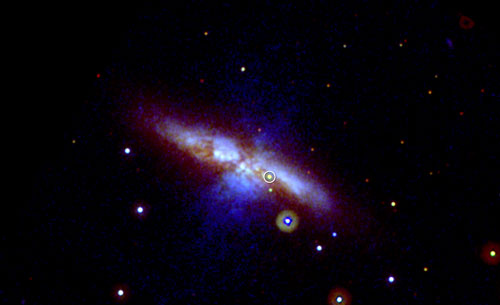 An exceptionally close stellar explosion discovered on Jan. 21 has become the focus of observatories around and above the globe, including several NASA spacecraft. The blast, designated SN 2014J, occurred in the galaxy M82 and lies only about 12 million light-years away. This makes it the nearest optical supernova in two decades and potentially the closest type Ia supernova to occur during the life of currently operating space missions.
An exceptionally close stellar explosion discovered on Jan. 21 has become the focus of observatories around and above the globe, including several NASA spacecraft. The blast, designated SN 2014J, occurred in the galaxy M82 and lies only about 12 million light-years away. This makes it the nearest optical supernova in two decades and potentially the closest type Ia supernova to occur during the life of currently operating space missions.
Jan 27th, 2014
Read more
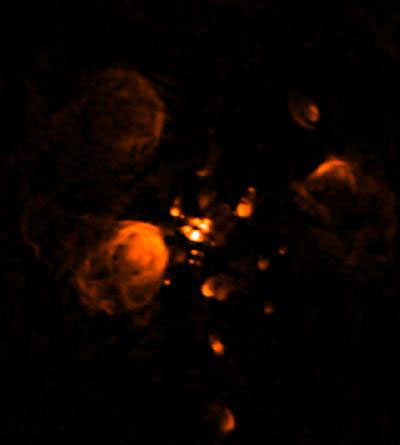 Astrophysicists have found evidence strongly supporting a solution to a long-standing puzzle about the birth of some of the most massive stars in the universe. Young massive stars shine brightly in the ultraviolet, heating the gas around them, and it has long been a mystery why the hot gas doesn't explode outwards. Now, observations have confirmed predications that as the gas cloud collapses, it forms dense filamentary structures that absorb the star's ultraviolet radiation.
Astrophysicists have found evidence strongly supporting a solution to a long-standing puzzle about the birth of some of the most massive stars in the universe. Young massive stars shine brightly in the ultraviolet, heating the gas around them, and it has long been a mystery why the hot gas doesn't explode outwards. Now, observations have confirmed predications that as the gas cloud collapses, it forms dense filamentary structures that absorb the star's ultraviolet radiation.
Jan 27th, 2014
Read more
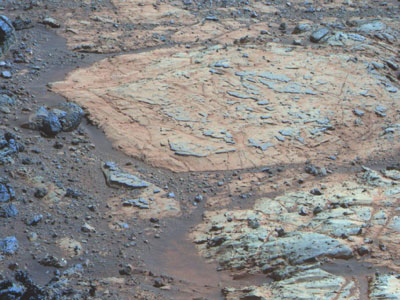 A team of researchers has found what may once have been the most liveable mud on Mars.
A team of researchers has found what may once have been the most liveable mud on Mars.
Jan 27th, 2014
Read more
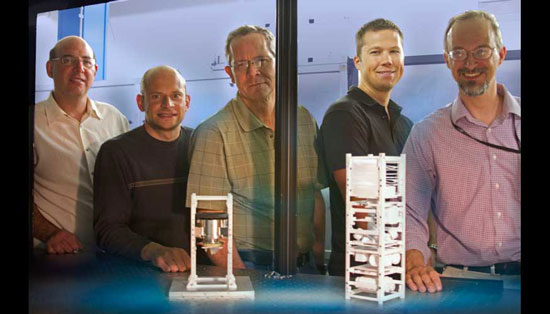 A team of Lawrence Livermore National Laboratory scientists are using mini-satellites that work as "space cops" to help control traffic in space.
A team of Lawrence Livermore National Laboratory scientists are using mini-satellites that work as "space cops" to help control traffic in space.
Jan 23rd, 2014
Read more
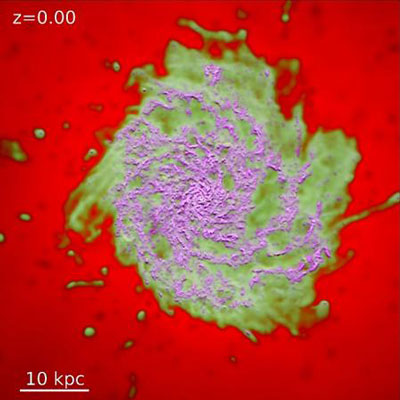 For decades, astrophysicists have encountered a contradiction: although many galactic-wind models - simulations of how matter is distributed in our universe - predict that most matter exists in stars at the center of galaxies, in actuality these stars account for less than 10 percent of the matter in the universe. New simulations offer insight into this mismatch between the models and reality: energy released by individual stars can have a substantial effect on where matter ends up.
For decades, astrophysicists have encountered a contradiction: although many galactic-wind models - simulations of how matter is distributed in our universe - predict that most matter exists in stars at the center of galaxies, in actuality these stars account for less than 10 percent of the matter in the universe. New simulations offer insight into this mismatch between the models and reality: energy released by individual stars can have a substantial effect on where matter ends up.
Jan 23rd, 2014
Read more
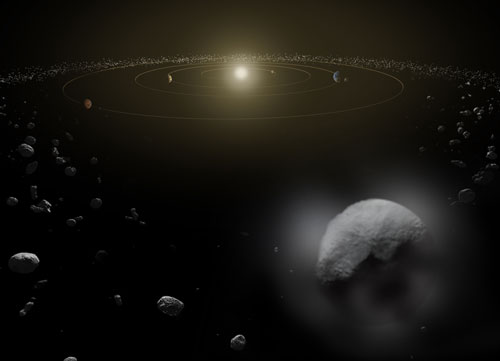 Scientists using the Herschel space observatory have made the first definitive detection of water vapor on the largest and roundest object in the asteroid belt, Ceres.
Scientists using the Herschel space observatory have made the first definitive detection of water vapor on the largest and roundest object in the asteroid belt, Ceres.
Jan 22nd, 2014
Read more
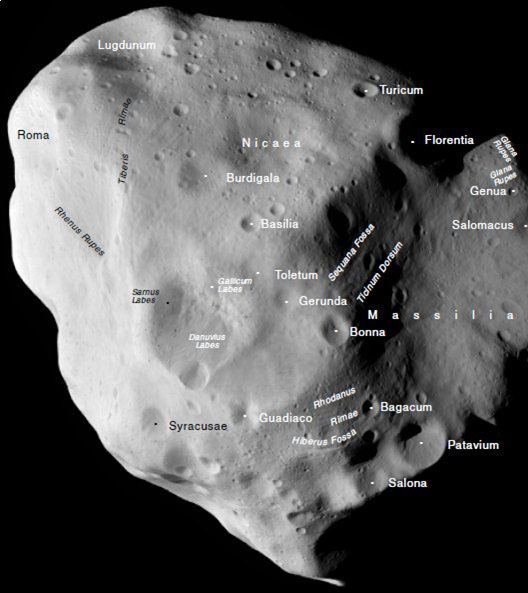 The development and construction of the OSIRIS onboard camera system.
The development and construction of the OSIRIS onboard camera system.
Jan 22nd, 2014
Read more
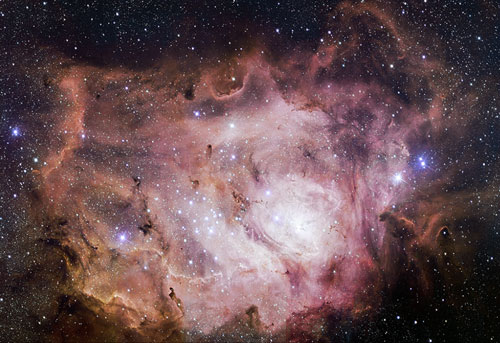 The VLT Survey Telescope (VST) at ESO's Paranal Observatory in Chile has captured this richly detailed new image of the Lagoon Nebula. This giant cloud of gas and dust is creating intensely bright young stars, and is home to young stellar clusters. This image is a tiny part of just one of eleven public surveys of the sky now in progress using ESO telescopes. Together these are providing a vast legacy of publicly available data for the global astronomical community.
The VLT Survey Telescope (VST) at ESO's Paranal Observatory in Chile has captured this richly detailed new image of the Lagoon Nebula. This giant cloud of gas and dust is creating intensely bright young stars, and is home to young stellar clusters. This image is a tiny part of just one of eleven public surveys of the sky now in progress using ESO telescopes. Together these are providing a vast legacy of publicly available data for the global astronomical community.
Jan 22nd, 2014
Read more
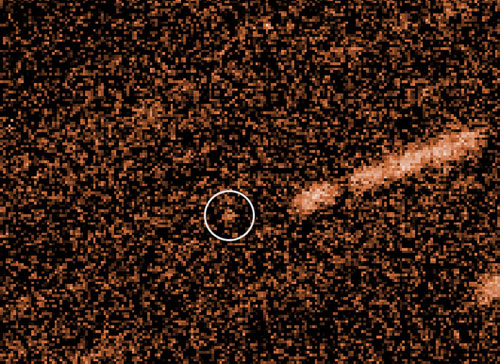 The first Near-Earth Object (NEO) recovery campaign has been successfully carried out by a new collaboration between the European Space Agency (ESA) and ESO. Up to now the asteroid 2009 FD had been ranked among the top five objects in a list of the most dangerous objects, but new observations with ESO's Very Large Telescope (VLT) have now shown that it is far less likely to hit the Earth than had been feared.
The first Near-Earth Object (NEO) recovery campaign has been successfully carried out by a new collaboration between the European Space Agency (ESA) and ESO. Up to now the asteroid 2009 FD had been ranked among the top five objects in a list of the most dangerous objects, but new observations with ESO's Very Large Telescope (VLT) have now shown that it is far less likely to hit the Earth than had been feared.
Jan 21st, 2014
Read more
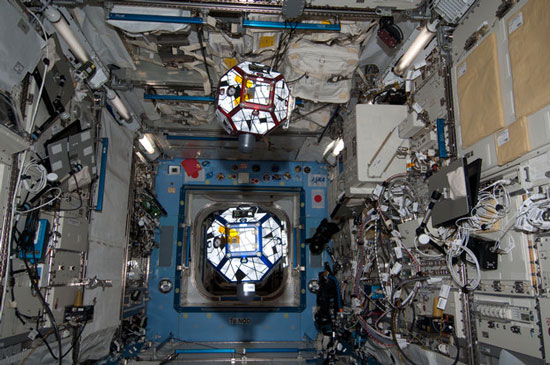 A comet heading towards Earth threatens humanity's existence - that was the virtual scenario of this year's Zero Robotics tournament. Secondary-school students from across Europe controlled miniature satellites on the International Space Station in a competition to save our planet.
A comet heading towards Earth threatens humanity's existence - that was the virtual scenario of this year's Zero Robotics tournament. Secondary-school students from across Europe controlled miniature satellites on the International Space Station in a competition to save our planet.
Jan 21st, 2014
Read more
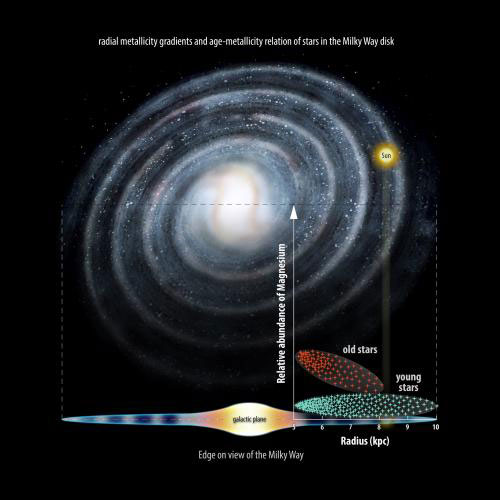 Research on first data release from Gaia-ESO project suggests the Milky Way formed by expanding out from the centre, and reveals new insights into the way our Galaxy was assembled.
Research on first data release from Gaia-ESO project suggests the Milky Way formed by expanding out from the centre, and reveals new insights into the way our Galaxy was assembled.
Jan 20th, 2014
Read more
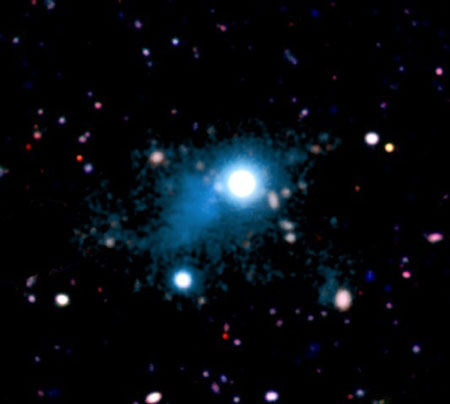 For the first time, astronomers capture image of the large-scale filamentary structures in space.
For the first time, astronomers capture image of the large-scale filamentary structures in space.
Jan 19th, 2014
Read more
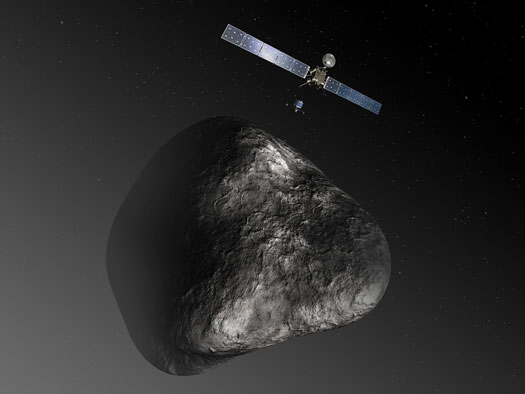 After a ten-year journey and a long, deep sleep the Rosetta space probe will be awoken on 20 January. The vehicle then starts the last leg of its journey which will lead it to the 67P/Churyumov-Gerasimenko comet. The Philae lander is to descend to the comet's surface in November.
After a ten-year journey and a long, deep sleep the Rosetta space probe will be awoken on 20 January. The vehicle then starts the last leg of its journey which will lead it to the 67P/Churyumov-Gerasimenko comet. The Philae lander is to descend to the comet's surface in November.
Jan 17th, 2014
Read more
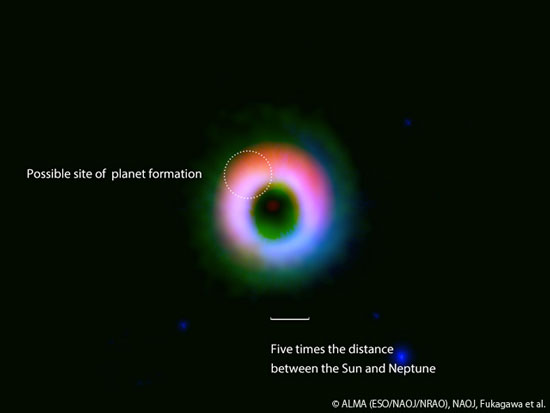 A team of Japanese astronomers has obtained a firm evidence of formatino of a giant planetary system around a young star by the observations with the Atacama Large Millimeter/submillimeter Array (ALMA). This result has a transformative impact on the theories of planet formation and gives us a clue to the origin of a wide variety of planetary systems.
A team of Japanese astronomers has obtained a firm evidence of formatino of a giant planetary system around a young star by the observations with the Atacama Large Millimeter/submillimeter Array (ALMA). This result has a transformative impact on the theories of planet formation and gives us a clue to the origin of a wide variety of planetary systems.
Jan 17th, 2014
Read more
 Astronomers using NASA's Hubble Space Telescope and Europe's Herschel Space Observatory have pieced together the evolutionary sequence of compact elliptical galaxies that erupted and burned out early in the history of the universe.
Astronomers using NASA's Hubble Space Telescope and Europe's Herschel Space Observatory have pieced together the evolutionary sequence of compact elliptical galaxies that erupted and burned out early in the history of the universe.
 Subscribe to our Space Exploration News feed
Subscribe to our Space Exploration News feed















